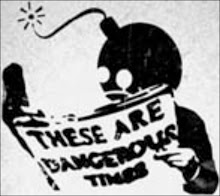For hundreds of years, the image of a skull and crossbones was all we needed to communicate the concept of poison. That is, until we started experimenting with radioactive compounds.
The symbol we commonly associate with radiation or radioactive materials was devised in late 1946 by an unspecified group of individuals working at the Radiation Laboratory of the University of California, Berkeley. At the time, the negative effects of radiation were only beginning to be understood well enough to warrant any kind of warning label. In fact, the symbol was originally intended only for local use at Berkeley, primarily in the form of hang tags (like the one above) and stickers.
Nels Garden, then the head of the Health Chemistry Group at Berkeley, is credited with promoting the symbol that has since been formalized by the federal government. In a letter he wrote describing the symbol’s origins, he said that many people in his group helped to “doodle” a sign that “would best symbolize the degree of hazard, type of activity, etc., but which was simple in design.” (The letter is quoted in the essay “A Brief History of a ‘20th Century Danger Sign’ ” by Lloyd D. Stephens and Rosemary Barrett, which is reprinted in “Health Physics: A Backward Glance,” a book edited by Ronald L. Kathren and Paul L. Ziemer.)
Any inspiration behind the three 60 degree arcs is mere speculation, but the ambiguity of its graphic shape seemingly mirrors the mysterious nature of radiation’s effects. It speaks in a far more abstract way than a simple skull and crossbones does, but no less ominously. The icon may be simple, but the weight that it carries is anything but.
Hilary Greenbaum @'NY Times'
Dead Can Dance - Dead Can Dance
15 minutes ago










No comments:
Post a Comment